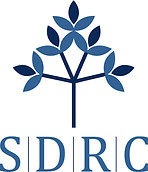Boost Your Brain Waves: 6 Brain Training Therapies for ADHD
- Danielle Carvalho
- Jun 23, 2021
- 2 min read
Updated: Nov 27, 2023
Working memory is the ability to hold information in your mind for several seconds, manipulate it, and use it in your thinking, it is central to concentration, problem solving, and impulse control.

Encinitas Learning Center offers LearningRx, Cogmed, Interactive Metronome as part of our brain training for cognitive skills strengthening.
People with ADHD can’t always hold on to information because their attention gets hijacked. They are distracted by things around them and by new thoughts that come to them. Improving your working memory capacity enables you to pay attention, resist distractions, manage your emotions better, and learn.
Based on early studies suggesting a correlation between working-memory training and improved standardized-test results, researchers developed high-tech therapies like Cogmed. These brain-training programs are not designed to replace ADHD medication, which helps manage core symptoms. Proponents of working-memory training point to two dozen studies that suggest it boosts IQ and improves test scores. Researchers from several universities have applied more stringent controls and more varied tests, and they have been unable to reproduce the same positive outcomes.
Interactive Metronome
Developed in the early 1990s to help children with learning and developmental disorders, Interactive Metronome (IM) is used to improve planning and sequencing. The end result for individuals with ADHD: increased focus for longer periods, and the ability to filter out internal and external distractions. Sessions can be done in an office with a trained coach or occupational therapist, at home under a coach’s supervision, or virtually at home.
Electrotherapy Stimulation
Two companies, Fisher Wallace Laboratories and Alpha-Stim, make cranial electrotherapy stimulators. The low-voltage stimulation is delivered via electrodes or clips attached to a person’s earlobes. Professionals recommend that patients use the device for 20 minutes a day, until you see signs of improvement.
Neurofeedback
A practitioner takes a detailed history of the patient and then maps the patient’s brain by having him wear an electrode-lined cap while performing a complex cognitive task, such as reading aloud. The brain activity is fed to a computer, which then maps the areas of the brain where there is too much or too little brain-wave activity .Visit EEGInfo.com to learn more about neurofeedback and to locate a practitioner in your area.
Low-Energy Neurofeedback
Based on a detailed family history map, the practitioner will treat four brain sites per session with radio frequencies, produced by a machine to which the patient is hooked up. The radio frequencies will gently stimulate those areas that are sluggish, and will take the edge off high-frequency sites. visit stonemountaincenter.com to locate a practitioner near you, log on to ochslabs.com.
Meditation
Meditation improves your ability to control your attention. In other words, it teaches you to pay attention to paying attention. Mindful awareness can also make people more aware of their emotional state
The basic practice is very simple: sit in a comfortable place and spend five minutes focusing on the sensation of breathing in and breathing out — pay attention to how it feels when your stomach rises and falls. If your mind wanders to something else — your job or some noise you just heard, label these thoughts as “thinking,” and refocus your attention on your breath.
This practice should be done daily, and every couple of weeks patients should increase the length of time spent on the exercise — up to 20 or more if they feel they can.
.png)







Collaboration and networking opportunities are also available to homeschool teachers and their students. Homeschooling communities provide platforms for teachers to connect, share resources, exchange ideas, and teachers come to your home collaborate on educational initiatives.